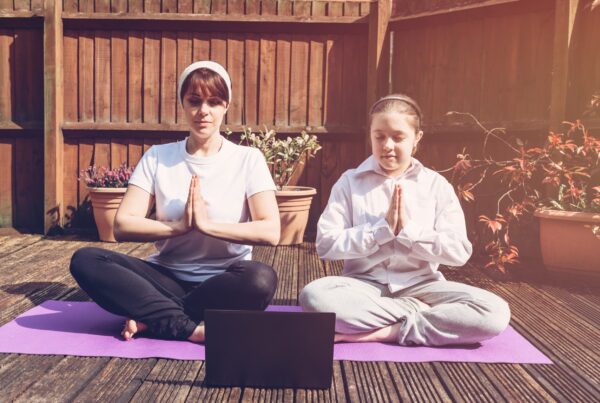”California, how much sleep do you think you need? It turns out, that can be a complicated question to answer and our sleep needs depend on a lot of factors. You can learn more in this week's article!
Reading Time: 10 Minutes
MWi Hacks:
- Learn 5 top tips to improve your sleep routines
- Find out what the experts are saying about sleep quantity
MWi Summary:
- Many different things affect our sleep needs such as sex, age, and job.
- However, across hundreds of studies it was determined that 8.4 hours is optimal for the average, middle-aged adult.
- Here are some tips to help ensure you get enough quality sleep:
- Be asleep more than two hours before midnight.
- Avoid screen time before bed.
- Do not have sugar foods before bedtime.
- Sleep in a fetal position.
- Keep your bedroom cool.
Within the last year, my colleagues and I have published a comprehensive review that outlined the current state, attitudes, and barriers to obtaining adequate sleep in service members. This review entitled, “Sleep in the United States military” was published in one of the most impactful science journals in the world – Nature Publishing Group – indicating that the ability of service members to achieve adequate sleep is a publicly salient topic. Many of the barriers that prevent service members from achieving adequate sleep include but are not limited to high operational tempos and an unhealthy work-life balance. Not having the ability to “reset” at home with family and communities outside of the workplace can lead to sub-clinically significant stress and anxiety that can prevent us from falling asleep and achieving our deepest and most restorative sleep at night.
Defining adequate sleep needs is complex, actually. As sleep scientists and clinicians, we have developed several assessments over the years in order to develop policies and guidelines for The National Sleep Foundation, The Center for Disease Control, and other public health entities. The simplest way to determine how much sleep you need is through trial and error. That is, as long as you keep your bedtimes and wake times consistent, you can ask yourself how fatigued and groggy you feel when you wake up from “X” number of hours of sleep? Further, you can ask yourself how fatigued you feel across the day from “X” number of hours of sleep and do you require a stimulant such as caffeine in order to maintain wakefulness. If the answers to these questions are somewhere along the spectrum of “no” and “no” then you at least subjectively know how much sleep you require.
But of course, sleep scientists and clinicians have executed several evidence-based approaches to determining adequate sleep amounts. These data come from large-scale, epidemiological studies (> 2,000 individuals studied in a single study) of unperturbed observations of human sleep behavior across multiple cultures as well as studies performed in a sleep laboratory under conditions of sleep deprivation and recovery sleep post-sleep deprivation. From these studies, it has been determined that the average adult human requires 7 – 9 hours of sleep per night. These studies have also revealed that the amount of sleep a human requires decreases with aging. Infants spend 50% of their 24 h day asleep. Young children and young adults ought to (emphasis on ought to) sleep 10 – 12 h a day; a growing brain and body require more sleep. The average middle-aged adult requires 8.4 hours of sleep per night as determined from these multi-faceted studies whereas the average senior citizen sleeps around 7 h per night.
From my own research, we have also determined that sleep needs greatly differ between men and women. Women, on average, are better equipped to handle sleep deprivation compared to men; thought to be due, in part, to biologically hard-wired demands of childbearing and rearing. Men also suffer from more daytime sleepiness compared to women. Women, of course, also have differing sleep needs across the menstrual cycle as well as during pregnancy and post-partum. The bottom line is that adequate sleep needs are not a one size fits all.
Another way to determine adequate sleep need is by paying attention to how much recovery sleep you require after a bout of sleep deprivation (i.e., continuous high operational tempo). Sleep is essentially like a bank account. For every hour of sleep lost, that is an hour of sleep that requires making up. One strategy that my colleagues and I have developed for military personnel is sleep banking prior to anticipated sleep deprivation. We have done an abundance of research to show the performance-enhancing benefits of an extra hour of nighttime sleep on next-day reaction time, decision-making, emotional intelligence, risk-taking, and of great relevance today, the immune system. Our most salient finding across these numerous studies is that next-day performance and physiology remain stable across 40 h of continuous wakefulness – not uncommon during military operations – if an individual has loaded up on sleep prior.
To conclude, it goes without saying that adequate sleep is what keeps our bodies and brains healthy and keeps us for being our best versions of ourselves mentally, physically, and emotionally. Without adequate sleep, especially in the long term, every aspect of mental and physical health suffers. Our family relationships suffer, our work productivity suffers, and our ability to think and react rationally suffers. Below are a few easy “hacks” for ensuring that you are getting your +/- 8.4 h of sleep a night.
1. Be asleep > 2 hours before midnight.
Quality sleep is biologically driven by the brain and is often inflexible to environmental change. The best quality sleep is achieved between 2200 – 0600. Quality sleep helps to clear toxins and repair muscle.
2. Electronic devices reduce quality sleep.
A recent study found that late-night tweeting increases next-day fatigue and daytime sleepiness. Biologically speaking, the blue light emitted from smartphones and TVs stops the nighttime release of the hormone that helps us fall asleep: melatonin.
3. No sugary foods before bedtime.
While it is common to wake up starving in the middle of the night, eating low glycemic foods that do not elevate blood sugar (e.g., sweet potatoes over a banana or ice cream) before bedtime will help reduce awakenings in the middle of the night.
4. Sleep in the fetal position.
Sleeping on your back or stomach makes the ability to breath difficult during sleep. Use pillows to condition the body to sleep in the fetal position.
5. Keep the room cool for quality sleep.
A room temperature between 68 -72 degrees Fahrenheit will help ensure that you do not wake up in the middle of the night and can achieve quality stages of sleep.
MWi would like to thank Allison J. Brager, for her expert insights that we were able to share with our community.
More on the Author:
For more information on holistic health and wellness in military communities, visit social media pages of US Army Warrior Fitness. CPT Allison J. Brager is the Director of Human Performance Operations and Outreach Education for the Army E-Sports and Warrior Fitness teams of the United States Recruiting Command. She is also one of Warrior Fitness athletes. She sits on fatigue management working groups for the Office of the Army Surgeon General, the federal government, and NATO Special Operation Forces. Previously at the Walter Reed Army Institute of Research, she and her teammates leveraged groundbreaking sleep discoveries to deliver knowledge products and materiel solutions to the Army, most recently during Operation Spartan Shield. She is the recipient of two National Research Service Awards from the National Institutes of Health and a former National Academy of Sciences research fellow for research on biomarkers that promote physiological resilience in extreme environments. At present, she is under candidate selection for the Army Astronaut Program in order to do research on the International Space Station. She has an Sc.B. from Brown University and a Ph.D. from Kent State University and is author of the popular science book, “Meathead: Unraveling the Athletic Brain.”





